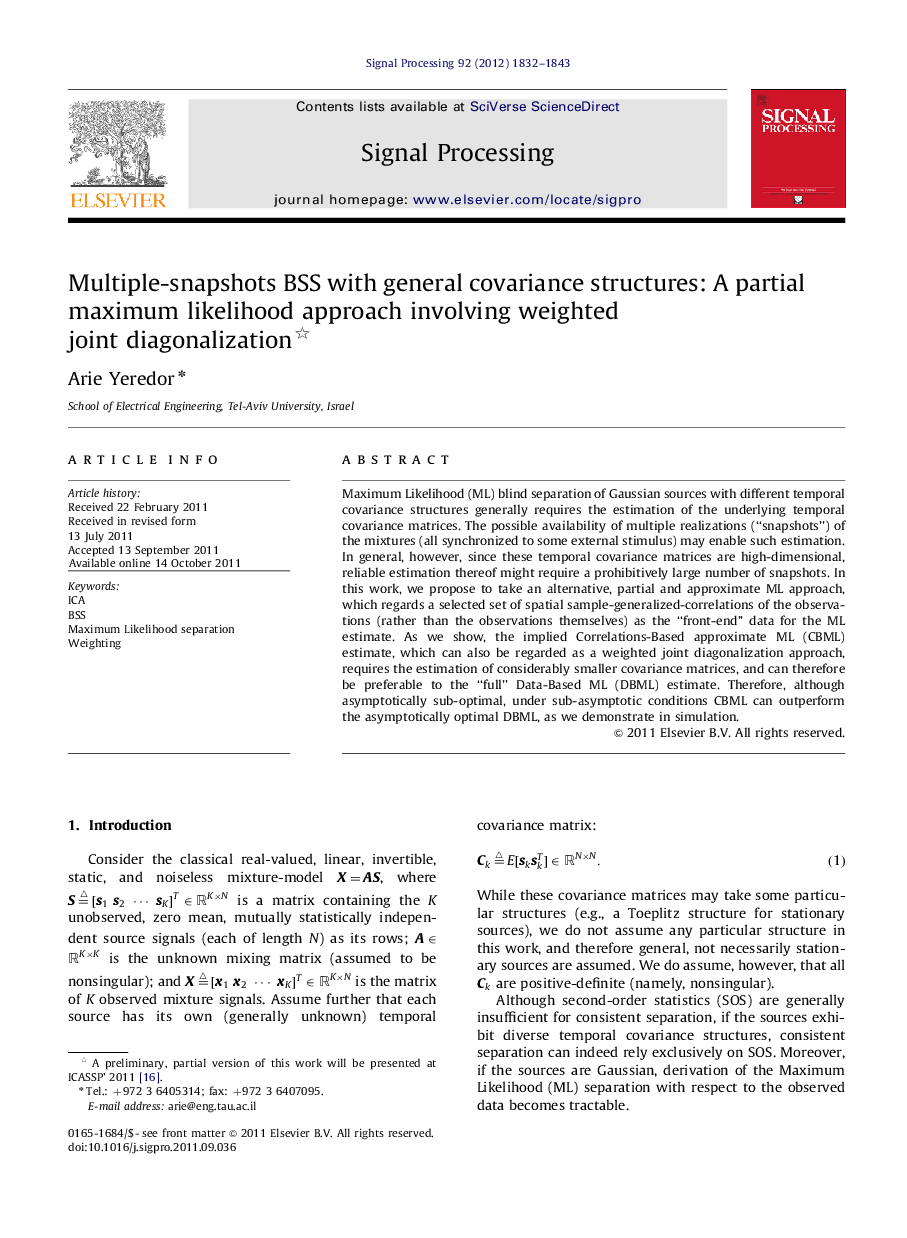| Article ID | Journal | Published Year | Pages | File Type |
|---|---|---|---|---|
| 562708 | Signal Processing | 2012 | 12 Pages |
Maximum Likelihood (ML) blind separation of Gaussian sources with different temporal covariance structures generally requires the estimation of the underlying temporal covariance matrices. The possible availability of multiple realizations (“snapshots”) of the mixtures (all synchronized to some external stimulus) may enable such estimation. In general, however, since these temporal covariance matrices are high-dimensional, reliable estimation thereof might require a prohibitively large number of snapshots. In this work, we propose to take an alternative, partial and approximate ML approach, which regards a selected set of spatial sample-generalized-correlations of the observations (rather than the observations themselves) as the “front-end” data for the ML estimate. As we show, the implied Correlations-Based approximate ML (CBML) estimate, which can also be regarded as a weighted joint diagonalization approach, requires the estimation of considerably smaller covariance matrices, and can therefore be preferable to the “full” Data-Based ML (DBML) estimate. Therefore, although asymptotically sub-optimal, under sub-asymptotic conditions CBML can outperform the asymptotically optimal DBML, as we demonstrate in simulation.
